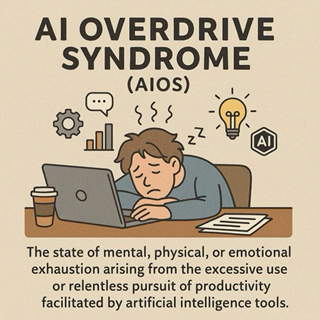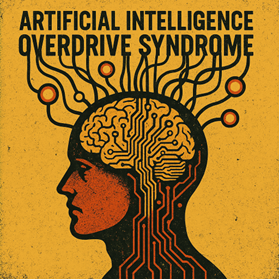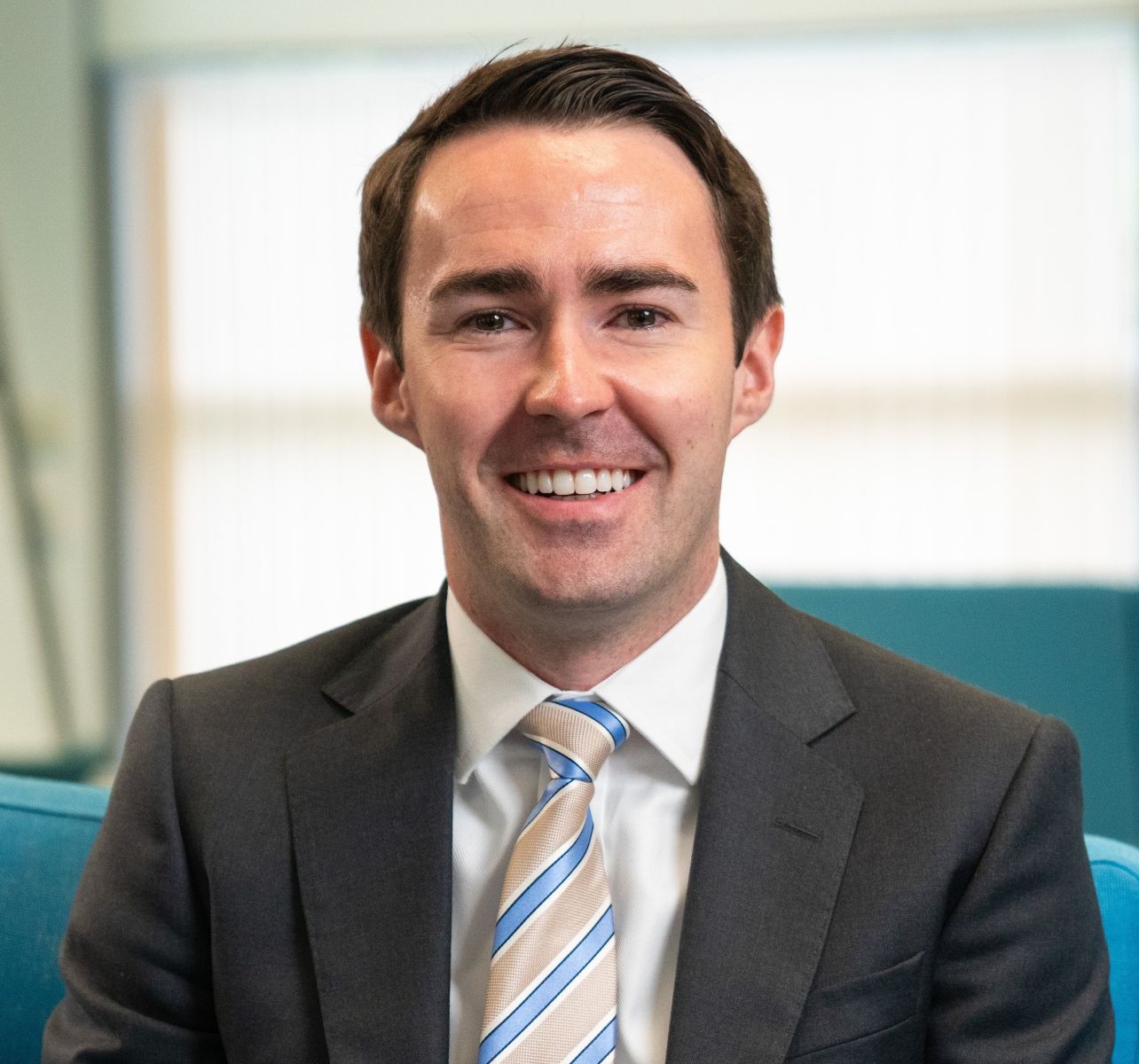You are here
- Home
- Alumni
- Professional Knowledge Bank
- AI Overdrive Syndrome: a reflection on burnout, balance, and boundless potential
AI Overdrive Syndrome: a reflection on burnout, balance, and boundless potential

Introduction
Recently, while travelling to London as a passenger rather than in my usual spot in the cockpit, I found myself seated next to a Microsoft director who was eager to discuss the rapid transformation of workplace technologies. As both an airline pilot and an entrepreneur with an unyielding enthusiasm for business and finance, my interest was piqued the moment our conversation turned to AI tools such as ChatGPT. That very same day, a friend also extolled the virtues of using artificial intelligence in his work life—so, never one to miss out on a good thing, I decided to subscribe to ChatGPT Plus that evening. My initial plan was modest: treat it a bit like Google but with a conversational twist.
Within a matter of days, however, my approach escalated dramatically. I had already set up coaching sessions for nearly every area of my life, explored the advanced voice feature (invaluable when you want to chat with a “virtual expert” at 2 a.m.), and started wondering why I had ever thought of AI as merely another search engine. My productivity soared, so I decided to try ChatGPT Pro, lured in by the opportunity to be even more productive. In the past three weeks alone, I juggled 12 days in the pilot’s seat, one day serving as Vice Chair of Governors at the Surrey Maths School and still found time to launch three entirely new websites from scratch—no templates, just domain names, web hosting, business email accounts, search engine optimisation (SEO), and keyword research. I also self-published a personal finance book (in paperback and Kindle format) on Amazon from a manuscript I’d written a while ago, having finally overcome the procrastination caused by my previous lack of knowledge about self-publishing.

The momentum did not stop there. Also in the past 21 days, ChatGPT has facilitated in-depth research on eight future technologies and three major industries, allowing me to produce 70-plus-page investment appraisals on multiple public companies. I gained insights into the latest research on accessibility in the airline industry for my work with Access-air-bility, critiqued my LinkedIn profile (resulting in an invitation to a research interview), and conducted an online cybersecurity audit of my digital footprint. To top it all off, I even started working out more and eating healthier—thanks to ChatGPT’s suggestions as my personal fitness coach and nutritionist. By 27th March (less than three weeks into this AI journey), I was seriously contemplating publishing seven more books by 1st June, spurred on by a burst of optimism that, somehow, it might just be possible.
At first glance, these accomplishments seem to confirm that ChatGPT is a near-perfect productivity hack. Yet the reality is more nuanced. Alongside my new hyper-efficiency, I have also discovered the perils of operating at full tilt in an AI-enabled world. A term I have coined to capture this phenomenon is:
AI Overdrive Syndrome (AIOS)
Definition: The state of mental, physical, or emotional exhaustion arising from the excessive use or relentless pursuit of productivity facilitated by artificial intelligence tools.
Waking up every morning with a head full of ideas and a desire to see them through is exhilarating. Yet I have also come to appreciate the importance of boundaries—both personally and within organisations—if we want to balance technological efficiency with human well-being.
From Curiosity to Full Adoption: My Journey with ChatGPT
My decision to subscribe to ChatGPT Pro arose from a mix of professional curiosity and practical necessity. Traditional search methods—scrolling through Google results or trawling old forum posts—often felt cumbersome and time-consuming. By contrast, ChatGPT offered concise, step-by-step guidance tailored to my specific requirements. Instead of wading through generalised articles, I could request detailed explanations and step-by-step guides on how to complete tasks such as registering domain names, choosing hosting solutions, setting up security protocols, and conducting SEO.
I even scripted an advertisement for one of my new websites with ChatGPT’s help and transformed the text into a dynamic visual using Sora Video Generation technology. Although the results were promising, my schedule was too saturated to fully capitalise on further video production or to explore ChatGPT Operator—a tool that can automate actions on one’s computer screen. In these moments, I realised that I was the main limiting factor in the AI equation. The potential of ChatGPT outstripped my capacity to harness it fully, which—ironically—only motivated me to work harder. Thus began a cycle of ambition and fatigue that would later make me reflect on AI Overdrive Syndrome (AIOS).
The Concept of AI Overdrive Syndrome

The World Health Organization defines burnout primarily within the context of traditional occupational stress, yet AI-driven workloads can introduce additional complexities (WHO, 2019). Tools like ChatGPT provide a seemingly infinite reservoir of insights, suggestions, and solutions, making it easy for driven individuals—often Type A personalities—to feel compelled to delve into every new possibility. What starts as excitement can morph into AIOS when the sheer volume of available knowledge eclipses human limits.
In my own experience, I was soon juggling a range of tasks and ideas far beyond what I would have considered feasible just a month earlier. The immediate satisfaction—whether it was finalising a website or producing a detailed market analysis—was unmistakable. However, the knowledge that there was always more to learn, more to tweak, and more to execute has already become a constant mental weight. While one’s capacity for rest and recovery remains finite, ChatGPT is perpetually available, generating new analyses and creative concepts on demand. The paradox is that the more I accomplished, the greater the urge to do more—until exhaustion inevitably set in, around day 20.
Discussions at The Open University: Four-Day Workweeks and AI Avatars
During a recent visit to The Open University Business School, I realised my experiences resonated with those of many fellow alumni and academics. AI was a dominant theme. Some spoke of using “AI avatars” in meetings, allowing them to maintain a virtual presence across multiple conversations without physically attending. The potential to amplify effectiveness is appealing, yet it also carries the risk of intensifying workloads.
Two professors offered contrasting views on whether AI should enable more personal free time or drive perpetual gains in productivity. One emphasised the historical pattern of technological advancements, from the Industrial Revolution onward, to increase output and reduce costs (Brynjolfsson and McAfee, 2014). The other pointed to successful four-day workweek trials, notably in Iceland and New Zealand, which showed that shorter schedules can maintain or even boost productivity, while also improving employee satisfaction and reducing sick days (CIPD, 2021). These findings illustrate that structured reductions in working hours can lead to healthier and more engaged teams—an insight that resonates powerfully in the context of AIOS.
The Tension Between Passion and Exhaustion
Many would label my fervour for new projects and ideas as workaholism, but I see it as a profound enthusiasm for business, finance, and continuous learning. Nonetheless, the possibility of overreaching is very real. The combination of AI-assisted research and my own limitless curiosity can obliterate any sense of a “workday.” Instead of reading general articles or passively browsing, I can summon in-depth analyses on venture capital, aviation finance, or novel marketing strategies. The thrill of obtaining precisely the information I crave can overshadow normal signals for rest.
Self-determination theory underscores how intrinsic motivation can fuel sustained effort—particularly relevant when an ever-present AI amplifies that drive (Deci and Ryan, 2000). In my case, it meant extended hours, shorter nights of sleep, and an escalating to-do list. Enjoyment or not, a total lack of boundaries can precipitate AI Overdrive Syndrome.
Insights from Management and Organisational Research
In a separate article, I explore the notion of a “Management Waterfall,” whereby I propose that managers should prioritise employee wellbeing so that they are better placed to serve customers, which in turn will take care of finances and, ultimately, shareholders. Companies that solely reward higher productivity, irrespective of human constraints, risk pushing people - especially overachievers - into AIOS. Research from the Chartered Institute of Personnel and Development shows that prioritising employee well-being benefits organisational outcomes and staff retention alike (CIPD, 2021).
Forward-thinking managers can mitigate AIOS by adopting measures that encourage healthier work practices. For instance, they might enforce reasonable deadlines, limit after-hours “deep research” tasks, or designate “AI-free” windows. Meanwhile, Microsoft’s Work Trend Index (2021) reveals that digital collaboration has already eroded traditional boundaries, leading to increased burnout. AI tools magnify this challenge by making around-the-clock productivity seem perpetually feasible.
The Future of Work: Beyond Quantity
Reflecting on my initial conversation with the Microsoft director, he predicted a future in which results, rather than sheer task volume, become the dominant metric. This perspective aligns with what I have observed first-hand. While ChatGPT has elevated my productivity across a range of projects - from launching websites and giving me step-by-step instructions on how to navigate Amazon’s book publishing website - it also poses the dilemma of too much, too fast.
Discussions at The Open University reiterated that robust well-being initiatives can support impressive outcomes. Experiments with four-day workweeks show that granting extra personal time can lead to stable or even improved performance (CIPD, 2021). Although uniform adoption of such practices may be challenging, these examples contest the notion that elevated productivity necessarily equates to longer work hours.
Ultimately, AI has an almost boundless capacity to accelerate productivity, but individuals remain constrained by the realities of physical and mental health. In essence, humans end up being the limiting factor in the AI equation. This dynamic, once accepted, can either drive a person into a cycle of AI Overdrive Syndrome or prompt a more measured approach that balances ambition with recovery.
Strategies for Balance
My experience underscores the critical need for mindful self-regulation in an era of advanced AI. Although I am not about to rein in my passion for finance and business, I have learned that pacing is vital. Setting clear time allotments for deep research prompts, choosing sleep over late-night brainstorming sessions, and monitoring my own fatigue are essential tactics.
Organisations can adopt parallel strategies. By recognising AIOS as a real phenomenon, leaders can develop policies that support the healthy utilisation of AI tools, clarify boundaries for after-hours work, and encourage intervals without AI-enabled collaboration. These interventions can help teams exploit the advantages of technology without sacrificing well-being or sustainable productivity.
Conclusion
Since 7th March, ChatGPT has propelled me through a remarkable array of projects. Its versatility as a mentor, instructor, and advisor has fundamentally changed how I tackle everything from marketing campaigns to personal fitness. Yet this level of output has also exposed the risks of AI Overdrive Syndrome, revealing how easily unbounded possibility can push a motivated individual beyond healthy limits.
During my Open University visit, two professors presented contrasting views on whether AI should offer more personal freedom or perpetually escalate productivity. History may favour relentless expansion, but evidence from four-day workweek trials confirms that employee well-being also drives performance. My exchange with the Microsoft director reinforced this balance, positing that outcomes—not mere volume—will increasingly define success.
Despite my innate zeal for business and finance, I have come to realise that navigating AIOS requires deliberate effort to protect personal and collective well-being. For high achievers, the temptation to align one’s pace with a tireless AI can be a swift route to burnout, no matter how fulfilling the work may feel. The key, I believe, is embracing AI as an extraordinary tool while acknowledging that the human capacity for creativity, rest, and reflection cannot be endlessly stretched. Striking this balance will determine whether AI serves as a catalyst for truly sustainable innovation—or devolves into a digital taskmaster imposing round-the-clock demands.
References
Brynjolfsson, E. and McAfee, A. (2014) The Second Machine Age: Work, Progress, and Prosperity in a Time of Brilliant Technologies. New York: W.W. Norton & Company.
CIPD (2021) Health and Wellbeing at Work: Survey Report. Chartered Institute of Personnel and Development. Available at: https://www.cipd.org/globalassets/media/comms/news/qqqhealth-wellbeing-work-report-2021_tcm18-93541.pdf [Accessed 29 March 2025].
Deci, E.L. and Ryan, R.M. (2000) ‘The “What” and “Why” of Goal Pursuits: Human Needs and the Self-Determination of Behavior’, Psychological Inquiry, 11(4), pp. 227–268.
Microsoft (2021) Work Trend Index: Annual Report. Available at: https://www.microsoft.com/en-us/worklab/work-trend-index [Accessed 29 March 2025].
WHO (2019) ‘Burn-out an occupational phenomenon: International Classification of Diseases’. World Health Organization, 28 May. Available at: https://www.who.int/mental_health/evidence/burn-out/en/ [Accessed 29 March 2025].
Image 2 and 3 created by James Boyce using Sora video generation.
James Boyce Author Bio

James Boyce is a British Airways pilot with a passion for leadership, innovation, and continual learning. Recognised in the AMBA Student of the Year 2024 awards as “Highly Commended”, he combines his aviation expertise and business acumen to champion forward-thinking management approaches. His professional and academic experiences reflect a deep commitment to improving processes and inspiring others to reach their fullest potential.
Driven by an avid interest in corporate strategy and investment research, James regularly shares insights on his personal website, www.jameswboyce.com, where he offers practical articles, tools, and thought leadership on topics ranging from leadership frameworks to financial analysis. Beyond aviation, his entrepreneurial focus extends to accessibility in air travel through Access-air-bility, a platform dedicated to making flying safer and more comfortable for travellers with specific health needs or mobility challenges.
An enthusiastic writer, James is the author of Personal Finance: A Practical Guide to Managing Your Money, a visual guide aimed at giving beginners an introductory knowledge of key financial principle and welcomes professional connections and collaborative inquiries via his LinkedIn profile.
In addition to his busy flight roster and entrepreneurial endeavours, James is a multifaceted individual whose pursuits span the creative, musical, and intellectual realms. A trained organist and classical guitarist, he enjoys refining his technique in both instruments whenever his schedule allows. He also holds prestigious fellowships as a Fellow of the Society of Crematorium Organists and a Fellow of the National Federation of Church Musicians, reflecting his dedication to mastering the art of liturgical music. His musical background, alongside his membership in Mensa and the Royal Aeronautical Society, exemplifies an inherent drive to challenge himself across varied disciplines.
Always seeking personal growth, James is currently learning Mandarin to expand his cultural perspectives and enhance his global engagement. By embracing new languages, he aims to foster deeper connections with international colleagues and communities, further enriching his professional and personal pursuits.
As someone who believes in lifelong education, James attributes his success to a blend of rigorous academic training, real-world commercial insight, and a relentless curiosity about the future of work and society. Whether in the cockpit at 35,000 feet, practising a classical guitar piece, or devising strategies for inclusive air travel, he strives to bring vision, discipline, and empathy to every role he undertakes.
For more information on James Boyce, his latest articles, and upcoming projects, visit his personal website at www.jameswboyce.com or his LinkedIn page at linkedin.com/in/jameswilliamboyce. You can also learn more about his accessibility initiatives by visiting Access-air-bility, or get insights to his insights into disruptive technologies at Cavatim.
April 2025
Would you like to contribute an article towards our Professional Knowledge Bank? Find out more.
